Because of severe droughts and little rain, governments are restricting water use in some areas of southern Europe. Climate change is finally reaching the people of Europe.
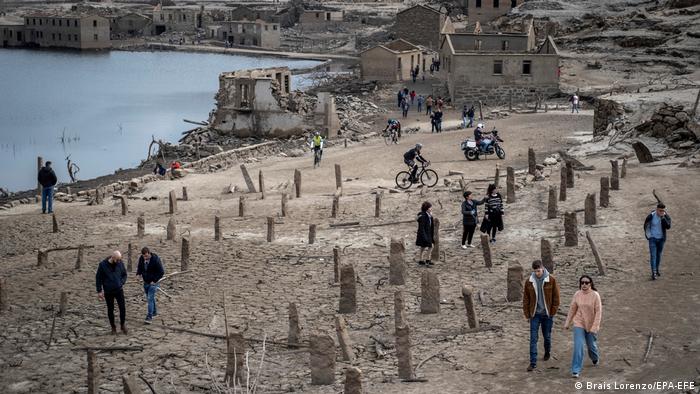
< p>Too much water consumption, for too little rain, sources of drinking water dry up. Amplified by man-made climate change, more and more people in Europe are feeling the consequences of more extreme heat waves, longer droughts and excessive water consumption. Southern Europe in particular is currently suffering from heat waves and months of drought.
In order to secure the water supply for the population, politicians are calling on people to limit their water consumption to what is absolutely necessary, but in some places this is not enough.
“One thing is droughts. The other is how much water we take out of the system,” says Dr. Nihat Zal, water expert at the European Environment Agency, the EU's environmental agency.
Private consumption of water in Europe accounts for just 9 percent 60 percent, consumed by farming.
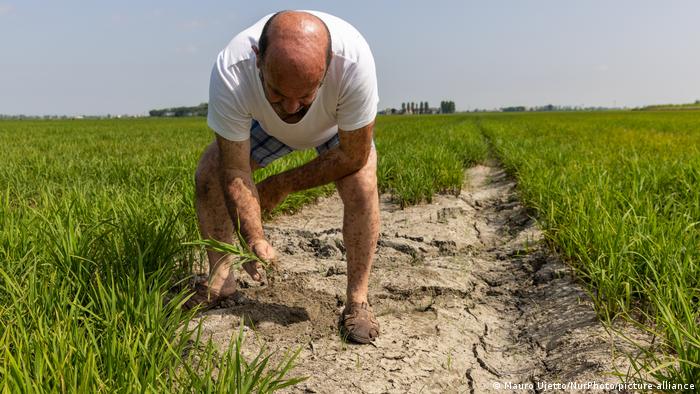
The drinking water supply in northern Italy and the harvest of this Italian rice farmer are under massive threat
Italy
The situation is currently most dramatic in northern Italy. The country is suffering from the worst drought in 70 years. Because of the tense water situation, several regions have now declared a water emergency. Over 100 cities are being asked to limit water consumption as much as possible. The Italian government has therefore yesterday declared a state of emergency for five regions until the end of the year. It wants to provide 36 million euros in the short term to combat the water crisis.
Because of months of drought and hardly any rain in winter, the rivers Dora Baltea and the Po are currently only carrying an eighth as much water as usual. They feed one of the most important agricultural regions in all of Europe. 30 percent of agricultural production is currently threatened by drought.
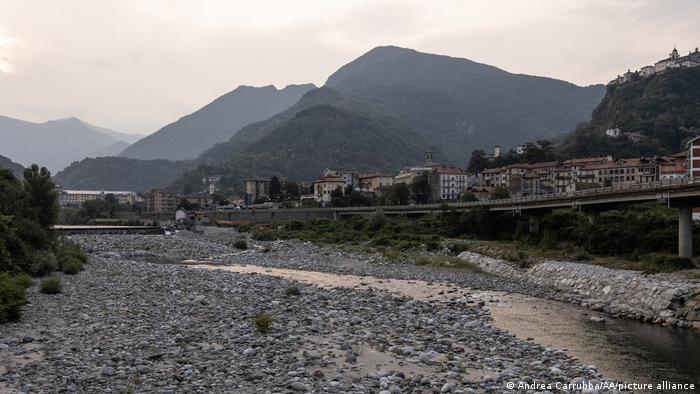
The Sesia River in the Piedmont is now just a stream. Harvests across the region are threatened
The Agricultural Irrigation Regulatory Agency (Bondesa) of the north-western region around the Sesia River has already ordered that fruit trees and papules can no longer be watered. The remaining water is intended to save the economically important rice crop.
At the weekend, the mayor announced on the website of the city of Verona that, in order to ensure the drinking water supply, the irrigation of gardens and sports fields, the washing of cars and courtyards, and the filling of pools and swimming pools are prohibited with immediate effect until the end of August. Vegetable gardens may only be watered at night. In Pisa, too, water will be rationed from next week, and from then on drinking water will only be allowed to be used “for domestic use and personal hygiene”. Failure to comply could result in a fine of up to 500 euros. In Milan, all fountains that are only used for ornaments were put up.
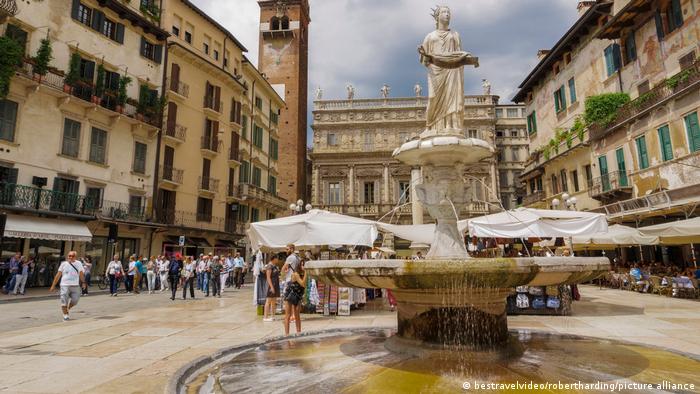
Pitoresque fountains like here in Verona or in Milan have already been turned off
The mayor of the small town of Castenaso wants to take an unconventional approach to the problem. With immediate effect, he has banned hairdressers and barbers from washing their customers' hair twice. This should save thousands of liters of water per day. There are ten hairdressers in the small town of 16,000 inhabitants.
Portugal
Portugal, on the other hand, already prepared in winter for the fact that 2022 could be an extremely dry year. Due to a lack of rain, the water levels in the dams were already extremely low in January. As early as February, the government therefore ordered that the use of the hydroelectric power plants be reduced to two hours a week. This is to ensure that the country can secure the drinking water supply for its ten million inhabitants for at least two years.
What became apparent in the winter is all the more clear today. By the end of May, 97 percent of the country was already in severe drought. The burning of coal, oil and gas has already made droughts, which otherwise only occur once every ten years, almost twice as likely in the Mediterranean region. Some regions are experiencing the worst dry season in a thousand years.
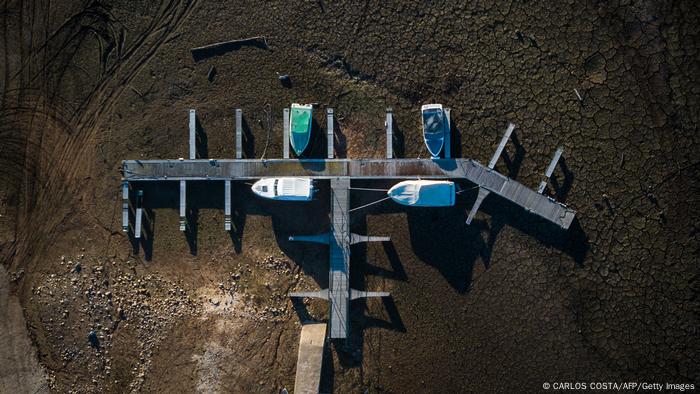
In central Portugal too, it's not just the boats that are now stranded
The Association of Irrigators for Farmers in the towns of Silves, Lagoa and Portimão in the south of the country have already activated an emergency plan to supply around 1800 farms and have halved the irrigation of some crops.
In the Portuguese media, Prime Minister for Environment and Climate Duarte Cordeiro emphasized last week that despite the current preparations, the country would have to live with restrictions and higher costs for water in the future. Duarte called on the economy to invest in measures. Opportunities for Nihal Zal from the EEA sees plenty of opportunities to increase efficiency or make savings. “On the way from the water source, for example a lake, to an industrial area, an average of 25 percent of the fresh water is lost.” Making water infrastructure more efficient has “huge potential for savings”, according to Zal
Spain
It is also extremely dry in Spain, so dry that two thirds of the entire area is threatened by desertification. This means that fertile soils are increasingly turning into sand.
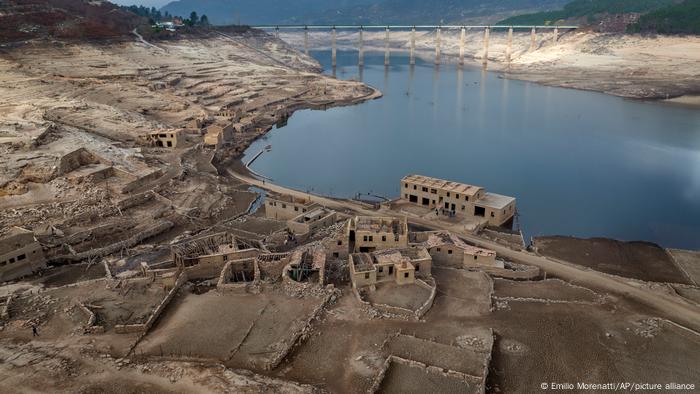
The village of Aceredo was founded 30 years ago flooded for a dam and now resurfaces.
After the winter was the second driest since 1961 according to the Spanish weather service, towns in the north of the country were forced to take drastic measures as early as February.
In the town of Campelles in Catalonia, it gave up By order of the city, there was sometimes only running water for a few hours a day. For emergencies, the community deposited filled water buckets at five locations in the village every day.
Wells and groundwater pipes are also dry in the small town of Vacarisses in the province of Barcelona. Currently, people only have running water between 6 a.m. and 10 a.m. and from 8 p.m. to midnight. The repairs to water leaks and the restrictions have reduced the water consumption of the community of 7,000 by up to 25 percent on a daily basis
Spain is the third largest producer of agricultural products in the EU. At least 70 percent of all fresh water demand is used for agriculture. “The need continues to grow. Instead of proposing measures to save water, we pretend that Spain has as much water as Norway or Finland, when in reality we are more on the level of North Africa,” Juan Barea from Greenpeace Spain told DW.
Although efficient drip irrigation is already being used in a large proportion of agricultural areas, at least one fifth is still being irrigated using non-sustainable methods.
In order to get better control of the water crises, one must get away from crisis management, as can now be observed with the rationing of water, but think long-term, like this Zal from the EEA.
That would mean more efficiency in dealing with water, forward-looking risk management and preparation for the next crisis. It also means “adapting to climate change, at the individual level, at the local level, at the government level, at all levels.”
Watch the video 07:37
Who benefits from the water crisis?